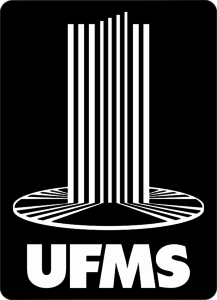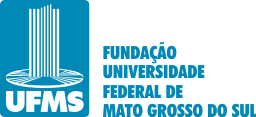Use este identificador para citar ou linkar para este item:
https://repositorio.ufms.br/handle/123456789/12726Registro completo de metadados
| Campo DC | Valor | Idioma |
|---|---|---|
| dc.creator | Marcos Sampaio Costa | - |
| dc.date.accessioned | 2025-10-02T18:57:25Z | - |
| dc.date.available | 2025-10-02T18:57:25Z | - |
| dc.date.issued | 2025 | pt_BR |
| dc.identifier.uri | https://repositorio.ufms.br/handle/123456789/12726 | - |
| dc.description.abstract | COSTA, Marcos Sampaio. ACUTE EFFECTS OF DOSE-DEPENDENCE CONTROLLED PHOTOBIOMODULATORY THERAPY ON MUSCLE PERFORMANCE AND FATIGUE DURING ISOMETRIC KNEE EXTENSION CONTRACTION IN ELDERLY INDIVIDUALS. 2025. f. Dissertation (Master in Movement Science) – Postgraduate Program in Movement Science, Fundação Universidade Federal de Mato Grosso do Sul - UFMS, Campo Grande, MS, Brazil. Physical exercise is important for quality of life in aging; however, approximately 55% of older give up exercising due to muscle fatigue. Photobiomodulation therapy (PBMT) is used to stimulate physical performance in athletes and healthy individuals. This study aimed to analyze the application of PBMT prior to the Isometric Endurance Test (IRT) in the quadriceps femoris (QF) muscle of elderly women in promoting physical performance. The participants (28 women, 71.22 ± 5.83 years) in the double-blind study were randomly divided into groups treated with Active PBMT and Placebo PBMT. The study was approved by the Research Ethics Committee of the Federal University of Mato Grosso do Sul (UFMS) under opinion number 6.529.039. The PBMT was performed with the Laser Matrix (830 nm) and LEDs (850 nm) in a pre-IRT application in the QF area. The participants performed IRT (60% of maximum voluntary isometric contraction - MVIC) up to the tolerance limit (20% of MVIC), with electromyographic recording (Median Frequency - Fmed), of endurance time and muscle strength. After 48 hours, they performed active or placebo application of PBMT before IRT (recording of Fmed and endurance time). The endurance times were normalized in Percentage of Time Variation (∆t (%)). The Active PBMT demonstrated higher ∆t (%) (194.21%), with a significant difference in relation to the Placebo PBMT (70.16%) (p < 0.0167). In the analysis of muscle strength, the 500 J placebo PBMT group showed early fatigue in relation to their respective Active PBMT. Doses of 125.1 J and 315 J did not differ between the groups. The Fmed over time in the IRT showed no significant difference between the Active PBMT and Placebo PBMT groups (F=0.616, p=0.804), with evidence of muscle fatigue in both groups over time. The 500J PBMT optimized QF strength in the initial and intermediate phases (Baseline, 25%, and 75%) of the IRT compared to placebo (p | - |
| dc.language.iso | pt_BR | pt_BR |
| dc.publisher | Fundação Universidade Federal de Mato Grosso do Sul | pt_BR |
| dc.rights | Acesso Aberto | pt_BR |
| dc.subject | Fotobiomodulação, Fadiga muscular Laser, LED, Envelhecimento, Rendimento físico | - |
| dc.title | EFEITOS AGUDOS DA TERAPIA FOTOBIOMODULADORA CONTROLADA POR DOSE-DEPENDÊNCIA NO DESEMPENHO E FADIGA MUSCULAR DURANTE A CONTRAÇÃO ISOMÉTRICA DE EXTENSÃO DO JOELHO EM PESSOAS IDOSAS | pt_BR |
| dc.type | Dissertação | pt_BR |
| dc.contributor.advisor1 | Adalberto Vieira Corazza | - |
| dc.description.resumo | COSTA, Marcos Sampaio. EFEITOS AGUDOS DA TERAPIA FOTOBIOMODULADORA CONTROLADA POR DOSE-DEPENDÊNCIA NO DESEMPENHO E FADIGA MUSCULAR DURANTE A CONTRAÇÃO ISOMÉTRICA DE EXTENSÃO DO JOELHO EM PESSOAS IDOSAS. 2025. f. Dissertação (Mestre em Ciência do Movimento) – Programa de Pós-Graduação em Ciência do Movimento, Fundação Universidade Federal de Mato Grosso do Sul - UFMS, Campo Grande, MS, Brasil. A prática do exercício físico é importante para a qualidade de vida no envelhecimento, entretanto cerca de 55% das pessoas idosas desistem de realiza-lo devido à fadiga muscular. A Terapia de fotobiomodulação (TFBM) é utilizada para estimular o rendimento físico em atletas e indivíduos saudáveis. Este estudo teve como objetivo analisar a aplicação prévia da TFBM ao Teste de Resistência Isométrica (TRI) no músculo quadríceps femoral (QF) de idosas na promoção do desempenho físico. As participantes (28 mulheres, 71,22±5,83 anos) do estudo duplo-cego foram divididas aleatoriamente nos grupos tratado com TFBM Ativa e TFBM Placebo, sendo o estudo aprovado pelo Comitê de Ética em Pesquisa da UFMS, com parecer número 6.529.039. A TFBM foi realizada com a Matriz de Lasers (830 nm) e LEDs (850 nm) em uma aplicação prévia ao TRI na área do QF. As participantes desenvolveram o TRI (60% da contração isométrica voluntária máxima - CIVM), até o limite de tolerância (20% da CIVM), com registro eletromiográfico (Frequência Mediana–Fmed), do tempo de resistência e da força muscular. Após 48 horas realizaram aplicação ativa ou placebo da TFBM antes do TRI (registro da Fmed e tempo de resistência). Os tempos de resistência foram normalizados em Percentual da Variação do Tempo (∆t (%)). A TFBM Ativa demonstrou maior ∆t (%) (194,21%), com diferença significante em relação a TFBM Placebo (70,16%) (p | pt_BR |
| dc.publisher.country | Brasil | pt_BR |
| dc.publisher.initials | UFMS | pt_BR |
| Aparece nas coleções: | Programa de Pós-Graduação em Ciências do Movimento | |
Arquivos associados a este item:
| Arquivo | Tamanho | Formato | |
|---|---|---|---|
| DISSERTAÇÃO-01-10-2025.pdf | 2,49 MB | Adobe PDF | Visualizar/Abrir |
Os itens no repositório estão protegidos por copyright, com todos os direitos reservados, salvo quando é indicado o contrário.

